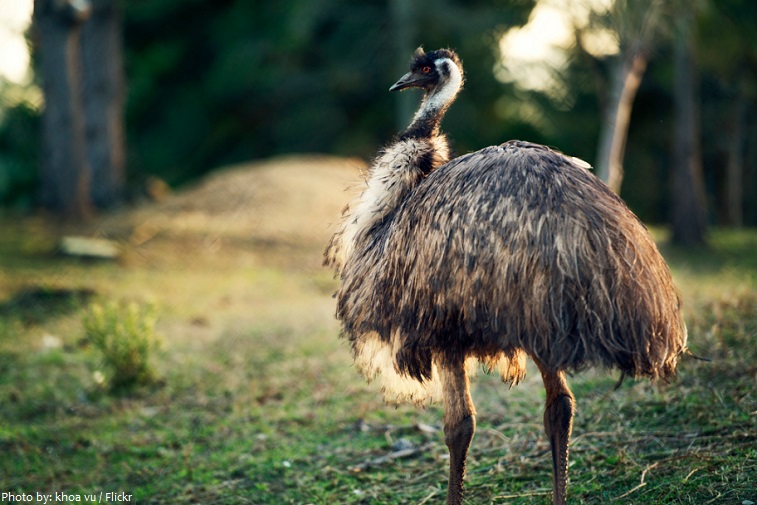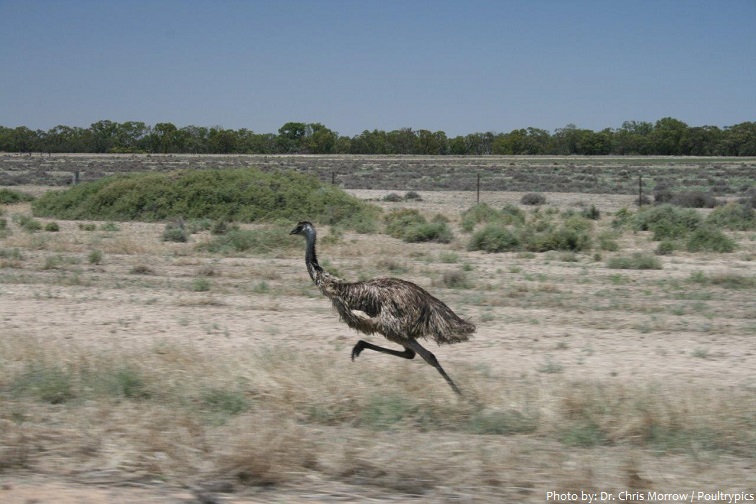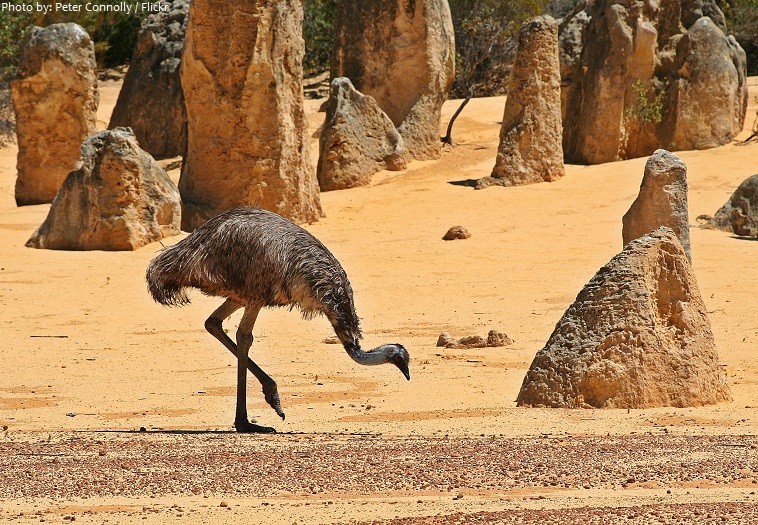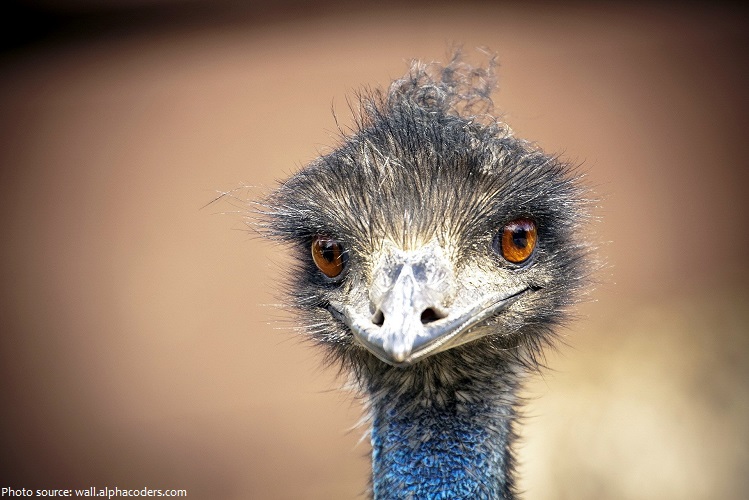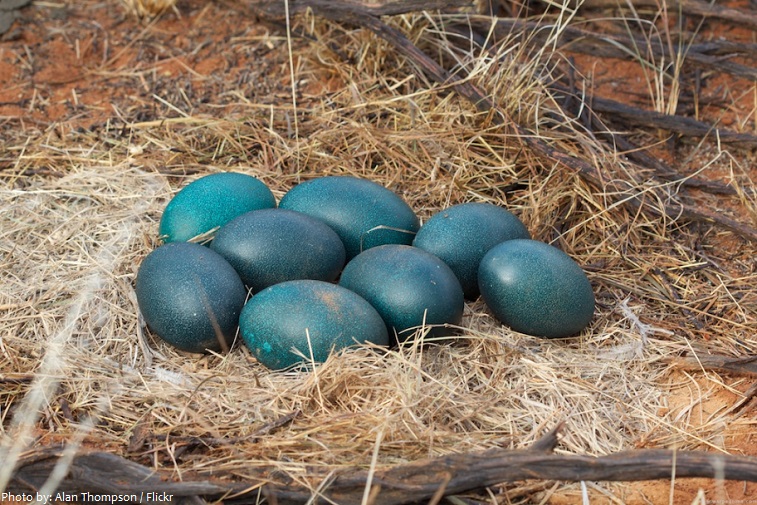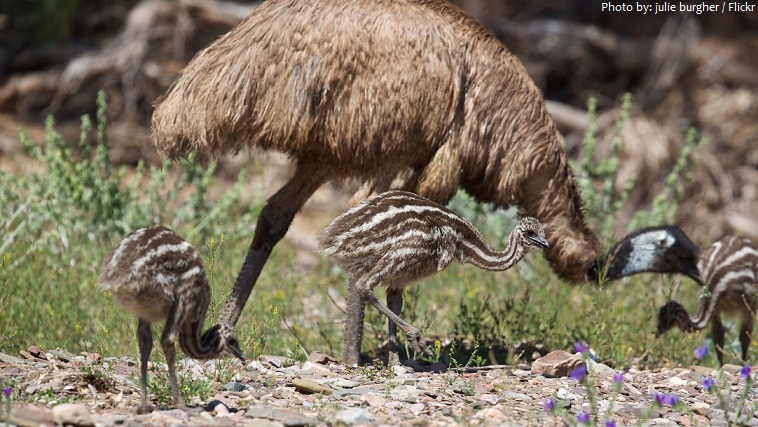The emu (Dromaius novaehollandiae) belongs to a group of flightless running birds known as ratites, the most primitive of the modern bird families.
The Emu is found only in Australia. It lives throughout most of the continent, ranging from coastal regions to high in the Snowy Mountains. However, they are most common in areas of savannah woodland and sclerophyll forest.
The lifespan is 10 to 20 years in the wild and up to 35 years in captivity.
The emu is the second-largest living bird by height, after its ratite relative, the ostrich.
Emus stand from 150 to 190 cm (59 to 75 in) in height. Measured from the bill to the tail, emus range in length from 139 to 164 cm (55 to 65 in). They weigh between 18 and 60 kg (40 and 132 lb).
Females are usually slightly larger than males and are substantially wider across the rump.
Emus are soft-feathered flightless birds with long necks and legs.
The neck of the emu is pale blue and shows through its sparse feathers.
They have grey-brown plumage of shaggy appearance; the shafts and the tips of the feathers are black. The plumage varies in colour due to environmental factors, giving the bird a natural camouflage.
A unique feature of the emu feather is the double rachis emerging from a single shaft.
Emus have tiny, useless wings, but their legs are long and powerful. They are the only birds with calf muscles. Their feet have three toes and fewer bones and muscles than those of flying birds.
Emus have three toes on each foot in a tridactyl arrangement, which is an adaptation for running and is seen in other birds, such as bustards and quails. The ostrich has two toes on each foot.
They can travel long distances at a fast trot and can sprint at 48 kilometers (30 miles) per hour for quite a distance. While running, the emu’s stride can be almost 2.7 meters (9 feet) long.
Their strong legs also allow the bird to jump 2.1 meters (7 feet) straight up.
They are also good swimmers – in fact they love to play in water or mud.
Emus are diurnal birds and spend their day foraging, preening their plumage with their beak, dust bathing and resting.
Emus are omnivores. They eat seeds, fruit, bark, nuts and stems. They also eat insects, small reptiles, amphibians and other small animals that they can handle.
They swallow small stones (called gastroliths or gizzard stones) which stay in the gizzard and help grind up food.
They require a large amount of water, drinking 9-18 litres (2.5-5 gallons) daily. If not disturbed, they may drink continuously for ten minutes.
Usually solitary, emus can form enormous migratory flocks when moving toward better food resources. Flocks often travel long distances for food and water.
Although Emus are not very social, they have a curious and docile nature.
Emus have good eyesight and hearing, which allows them to detect threats at some distance.
The emu has a pouch in its throat that is part of the bird’s windpipe and is used for communication. When the pouch is inflated, the emu can make deep booming, drumming, and grunting sounds. These calls are usually made during courtship and the breeding season, heard up to 2 kilometers (21.2 miles) away! A hiss, described by one of our animal trainers as bloodcurdling, is effective at warning off dingoes.
Emus form breeding pairs during the summer months of December and January, and may remain together for about five months.
Males construct a rough nest in a semi-sheltered hollow on the ground, using bark, grass, sticks and leaves to line it.
The female lays 5 to 15 avocado-green eggs over several days. When finished, the female wanders off, leaving the male to incubate the eggs. Females can mate several times and lay several clutches of eggs in one season.
The emu is able to store fat very efficiently. This allows it to go for a very long time without food and permits the male to incubate the eggs over a 48 to 56 day incubation period. During that time, he neither eats nor drinks and loses up to one-third of his body weight.
Newly hatched chicks are cream-colored with dark brown stripes. They are cared for by the male for a further four to six months. Emus are full-grown at 12 to 14 months but don’t reach sexual maturity until about 2 years of age.
Predators of emus include dingos and wedge-tailed eagles.
To protect themselves from predators, the Emu’s main defence is a swift kick or two using their powerful legs.
Although they live in the wild only in Australia, their numbers are healthy and consistent there, and they have no pressing risk of endangerment.
An emu’s body contains 13.5 liters (3 gallons) of oil. Emu oil is used in lotions, soaps, shampoo, and health care products.
The emu is popularly but unofficially considered as a faunal emblem – the national bird of Australia.
The Australian coat of arms has the image of an emu and a kangaroo, both animals that cannot back up.
More than 600 places in Australia are named after the emu in their title, including mountains, lakes, hills, plains, creeks and waterholes.
The emu has a prominent place in Australian Aboriginal mythology, including a creation myth of the Yuwaalaraay and other groups in New South Wales who say that the sun was made by throwing an emu’s egg into the sky; the bird features in numerous aetiological stories told across a number of Aboriginal groups.


